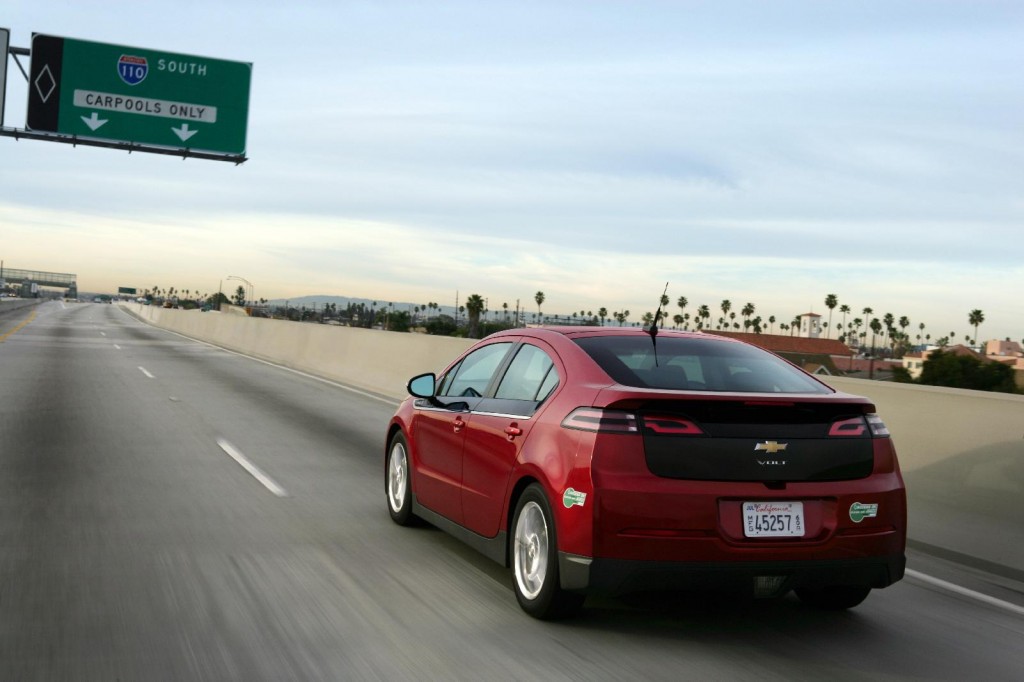After a rough period last year, the Chevrolet Volt extended-range electric car has settled down and is now the best-selling plug-in car in the U.S.
General Motors is continuing a program, launched a year ago, that makes Volts available for loan both to interested buyers and members of the media--even those who don't usually cover the car industry.
One such writer is George Anders, who's worked at the Wall Street Journal, written several books, and presently writes a column for Forbes Online.
DISCLOSURE: This writer worked at a previous job with George's better half, and has had dinner at their house--so while we may disagree with him, we respect his views.
In Anders' first column about the Volt in mid-July, he wrote that "the car itself is quite nice" at the end of the first page of his column--and that, "From an engineering standpoint, GM can be proud of its work."
You might well have missed those conclusions, though, because Anders led off with full details on his discovery that there wasn't a charging station convenient to his house. (There are about 10,000 public charging points in the U.S., of which 6,000 have been added this year.)
Much of the rest of his article was taken up with his annoyance and irritation at having to move a basketball hoop in his driveway, rearrange some bicycles, and otherwise make provisions to plug the Volt into an electric socket to recharge it in his own garage (as most owners do for most of their charging).
Anders seemed to be quite perplexed by the charging process, saying owners were "locked into a protracted recharging ritual every day or two" and calling that a shortcoming "too significant to paper over."

2013 Chevrolet Volt
The ever-growing number of Volt faithful sprung into action, deluging him with comments on what at least some felt was an overstated concern.
The response was so great, in fact, that Anders felt compelled to follow up with a second column, in which he called Volt owners a "smart, generally friendly bunch" and noted that he'd been offered a host of practical advice on charging--along with paeans to the car's good points, as seen by its owners.
He was rather less charitable toward a GM communications representative who took umbrage with his column.
We're not sure we agree with Anders that, "Getting the Volt recharged is testing the patience of first-time drivers across America." In fact, it's entirely possible to drive the Volt without ever recharging it--though that rather defeats the purpose of the car.
But we can't help but agree with his conclusion that, "We all have personal circumstances. It wouldn’t hurt GM to see the world through our eyes."
And, indeed, it may be that Anders simply doesn't share the enthusiasm or motivations of the various groups of early adopters who are buying plug-in cars today, despite his residence in Silicon Valley.
In the end, we think his first column was a bit unbalanced. Yes, to plug in a car in your garage, you may have to rearrange it. That seems a small price to pay if you've just spent $40,000 or more on a plug-in electric vehicle.
Perhaps the whole affair underscores three points:
First, the Volt's biggest asset (in addition to being fun to drive and cheap to run) is its passionately dedicated base of owners. They are so dedicated to their plug-in cars that they even create commercials to replace the underwhelming efforts from GM's own marketing department.
Second, the best way to convince someone of the merits of an electric car is to get that person into the driver's seat. Recharging or not, Anders liked the actual car and its performance.
Third, you can never quite predict what odd reactions people will have to their first electric-car experience--but a continuing conversation seems to be the best way to overcome qualms, whether long-held concerns or quick first impressions.
+++++++++++













